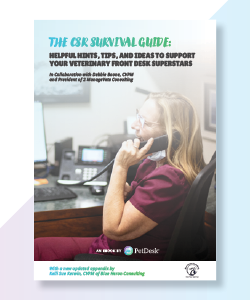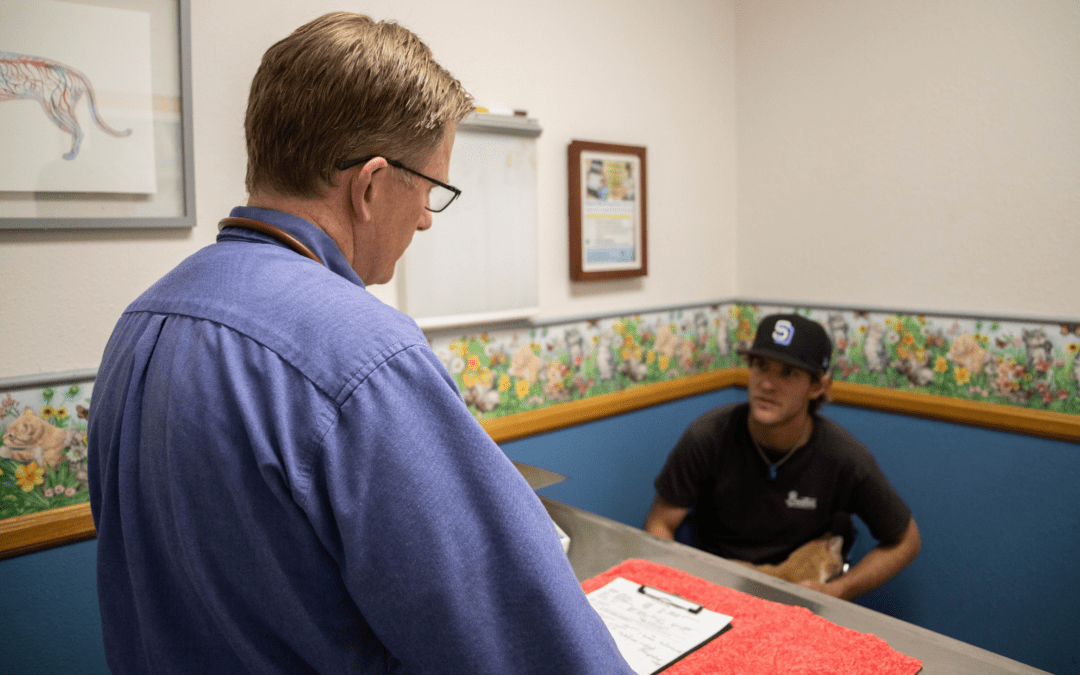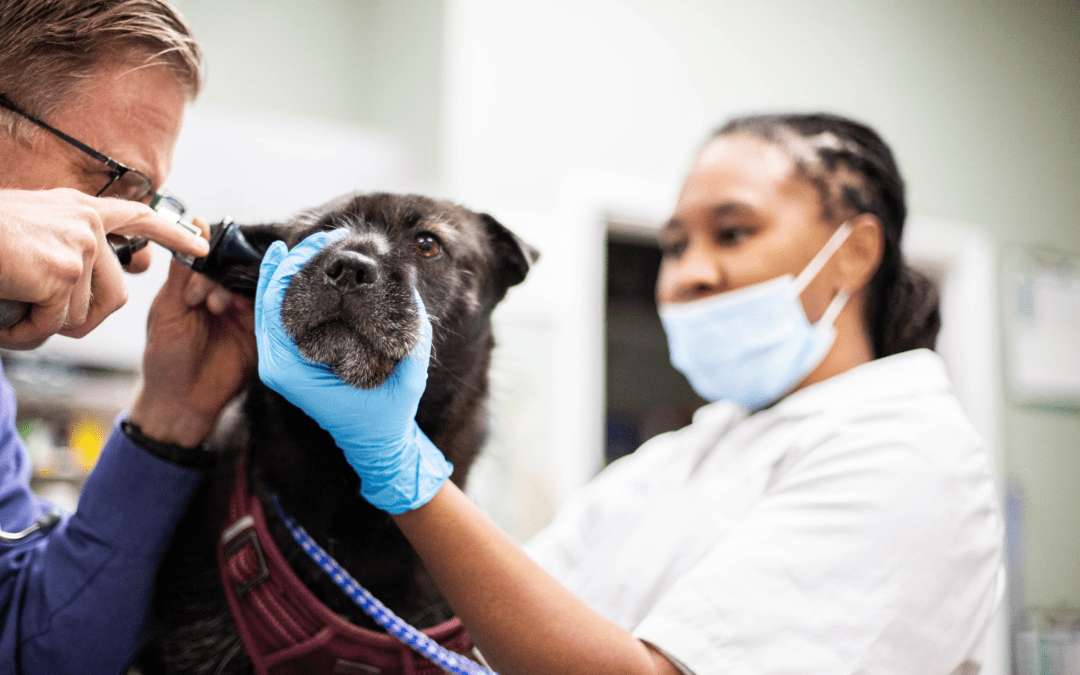Save time in an era of split staff and curbside service
At the beginning of the pandemic, veterinary practices did two important things to continue delivering care while ensuring their staff and clients’ health. First, practices shifted to curbside services to minimize contact between clients and staff. Second, practices split their staff and moved certain roles to remote if they did not need to be physically in the clinic, and began cleaning and sanitizing even more than in the past. AVMA published detailed guidelines for these changes here.
Practice owners have embraced these changes. They even seemed minor to some veterinary practices. While friends and family saw their jobs threatened by the pandemic, those in the veterinary industry viewed operational changes as a worthwhile price to pay for their health and stability.
Now, within this ‘new normal,’ veterinary teams are grappling with a relentlessly demanding work environment. As curbside services become the norm, appointments can involve up to ten phone calls – three times more than before. On top of that, there are fewer team members to field and make those phone calls.
So what’s a veterinary practice to do? Here are 8 ways to alleviate your front desk, grouped by how much impact it can have:
Easy Wins
If you’re like the thousands of other veterinary practices that have operated with appointments, postcards, the phone, and a lobby, you’ve noticed a vastly higher volume of phone calls since curbside began. Without adding new tools, here are some ways to deal with the change.
1. Have someone ready to answer the phone at all times to satisfy concerned clients
Especially with a short staff, it is important to meet client expectations by having at least one person ready to answer the phone. If you have a higher volume, consider enlisting two people on the phones.
2. Use your remote teams to lighten the load
If your front desk is struggling to keep up with appointment-related phone volume, how can you expect them to complete all the administrative tasks they could do in the past? If you use cloud software services, you can have a remote employee monitor and manage administrative tasks or routine phone calls (like appointment confirmations) remotely. Your team members answering the phone will thank you!
3. Use voicemail scripts
Many veterinary front desks will be calling down a list and fielding inbound calls at the same time. To make this easier – and to ensure the right information is conveyed each time – write a script for your front desk to perform. Help them save mental energy as they make these routine phone calls.
Higher Impact
If your clinic was already swamped before the pandemic, you may need additional channels to help eliminate the bottleneck in your phone lines that frustrate your staff and clients alike. Consider these following options to make their lives easier:
1. Connect with your clients via text message
Clients dislike phone calls, too. Frankly, some communication is just more efficient via text. It costs valuable moments to leave a voicemail for a negative fecal – a templated text message can do the same thing in only three clicks. Plus, during curbside, a text message can be easy to reference for clients if they need instructions when they arrive.
2. Utilize web forms
If your practice relies on the phone or paper forms to intake clients, you’re likely accommodating an extra trip to the client outside, or adding minutes to the appointment scheduling call. What website provider do you have? Some website providers can easily put a form on your website to your specifications, and deliver them via email. WhiskerCloud has a handy guide to digital forms for veterinary hospitals.
3. Ensure resilience by cross-training your staff
Many veterinary technicians are handling the phones, and why not? Operating with a skeleton staff makes your practice vulnerable – if a single staff member calls out, the entire team picks up more slack. While your protocols are shifting during COVID-19, make sure you train and support all staff members to ensure clients receive the best experience possible. WhiskerCloud has a guide to digital forms for veterinary hospitals that they built in COVID-19.
Highest Impact
Clinics that already use a lot of technology, have tech-savvy clients, or feel they have ‘survived’ the worst of the pandemic’s impact on their business can also consider these options.
1. Utilize remote doctors and offer telemedicine
This is not just limited to remote doctors, but in a time where many are staying home on certain days, it’s a way to continue delivering care and maintaining appointment volume while they’re out of the office. As a bonus, you get to satisfy the 64% of pet owners who would be more comfortable if their veterinarian provided telemedicine services.
2. Livestream appointments to clients in their cars
Clients never had to part with their pet as early in the appointment process as they do now. Many practices using telemedicine tools find good use for them by ‘inviting the client in’ to the exam via an iPad or other device. Including clients in their pets’ care is always advisable, especially as they go through this new experience with you.
The ‘new normal’ isn’t as jarring and surprising as it was earlier this year, but that doesn’t mean it’s gotten easier. Keep up the good work, make the changes you need to make, and rest assured that after COVID-19, these changes will continue to propel your business forward sustainably.
Download our free CSR Survival Guide to access helpful resources, checklists, and ideas on how to use the tools you have to streamline your front desk.







